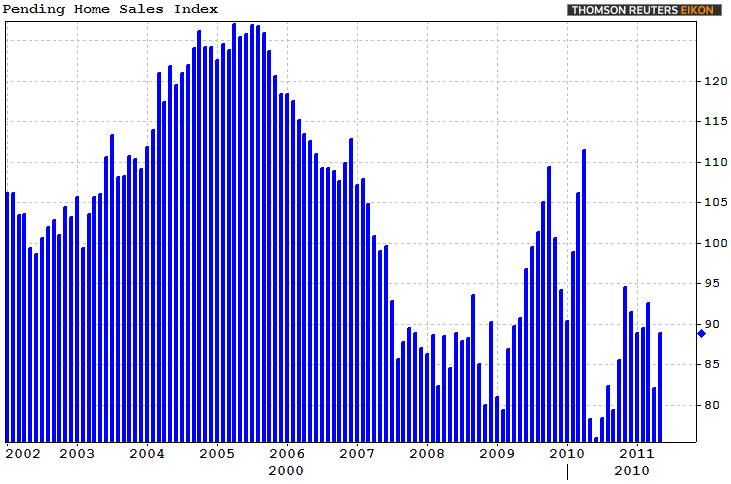There's some positive news on the future of home sales.
The Pending Home Sales Index rose sharply in May, indicating an upbeat outlook for the second half of the year, according to the National Association of Realtors®. The Index, released on Wednesday, showed pending sales up nationally with every region recording increases on both a month-over-month and one year comparison. A sale is listed as pending when the contract has been signed but the transaction has not closed, though the sale is typically finalized within one or two months of signing.
The Index rose 8.2 percent to 88.8 in May from April's figure of 82.1 percent which was also revised upward from the preliminary numbers. The May figures are 13.4 percent above the May 2010 numbers. This is the first time in over a year that year-over year index figures were up and was the largest increase since November 2010 when pending sales rose 10.6 percent.
An index of 100 is equal to the average level of contract activity during 2001, the base year for the index. 2001 coincided with the first of five consecutive record years for existing-home sales so represents a level that is historically healthy.

Lawrence Yun, NAR chief economist, said the Index increase bodes well for home prices. "Absorption of inventory is the key to price improvement, and this solid gain in contract signings implies that home values in many localities are or will soon be stabilizing as inventories get absorbed at a faster pace," he said. "Some markets have made a rapid turnaround, going from soft activity to contract signings rising by more than 30 percent from a year ago, including areas such as Hartford, Conn.; Indianapolis; Minneapolis; Houston; and Seattle."
Pending home sales have trended up unevenly since bottoming last June, rising in seven of the past 11 months. "Home sales still could be 15 to 20 percent higher," Yun said. "If banks would simply return to normal sound underwriting standards and begin lending to more creditworthy borrowers, we'd get a much faster recovery in the housing sector."
On a regional basis, in the West, which may have been hardest hit by the housing downturn, the Index surged 12.9 percent to 100.6. This is 13.5 percent above May 2010. The Midwest rose 10.5 percent to 82.8 percent, 17.2 percent higher than a year earlier and in the Northeast the increase was 7.3 percent from April and 4.4 percent year-over-year. The Index in the South was up 4.1 percent to 95.0, 14.6 percent higher than a year earlier.
Yun indicated that the figures might have been higher. "A nonsensical situation has developed recently in some states with HUD unable to complete foreclosure deals because of insufficient funds to pay attorney fees at closing, even with buyers offering the full listing price."







